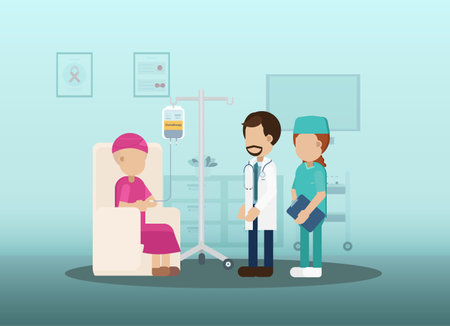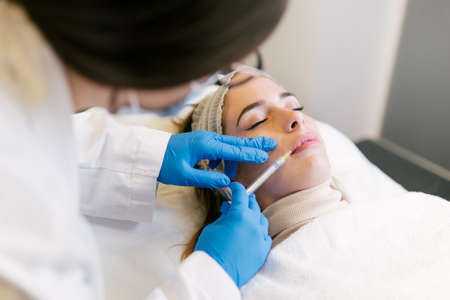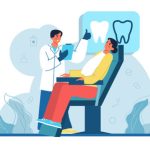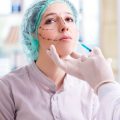Immediate Aftercare Essentials
Key Steps to Take Right After Your Non-Surgical Eyelift
Taking care of your skin right after a non-surgical eyelift is essential for achieving the best results and ensuring a smooth recovery. Here are the most important steps to follow in the first 24-48 hours:
Gentle Cleansing Practices
Your skin will be sensitive following treatment, so its important to keep it clean while being gentle. Use a mild, fragrance-free cleanser and lukewarm water. Avoid rubbing or pulling at the delicate skin around your eyes. Instead, gently pat the area dry with a soft towel.
What to Avoid
| Activity/Product | Reason to Avoid |
|---|---|
| Makeup (especially eye makeup) | Can irritate or infect treated skin |
| Heavy creams or ointments | May clog pores or interfere with healing |
| Direct sun exposure | Sensitive skin is more prone to sunburn and pigmentation changes |
| Hot tubs, saunas, steam rooms | Heat can worsen swelling and redness |
| Strenuous exercise | Increases blood flow, which may intensify swelling or bruising |
Managing Mild Swelling or Redness
Mild swelling or redness is normal after a non-surgical eyelift. To help manage these effects:
- Apply a cool compress (not ice directly) to the area for short periods.
- Avoid touching or scratching the treated area.
- If needed, use over-the-counter pain relief like acetaminophen (Tylenol), but avoid aspirin and ibuprofen unless your provider says otherwise.
- Keep your head elevated when resting to minimize swelling.
If You Notice Anything Unusual…
If you experience severe pain, increased redness, pus, or any signs of infection, contact your provider right away. These are not typical side effects and need prompt attention.
2. Managing Discomfort and Side Effects
Understanding Common Post-Treatment Symptoms
After your non-surgical eyelift, it’s completely normal to experience mild side effects like swelling, redness, or tenderness around the treated area. These symptoms are usually temporary and should improve within a few days. Knowing what to expect can help you feel more at ease during your recovery.
Typical Post-Treatment Symptoms and What They Mean
| Symptom | What to Expect | How Long It Lasts |
|---|---|---|
| Swelling | Mild puffiness around eyes | 1-3 days |
| Redness | Slight redness at treatment site | A few hours to 1 day |
| Tenderness | Sensitivity when touching the area | 2-5 days |
| Bruising (less common) | Small purple or blue marks | Up to 1 week |
Practical Tips for Relief at Home
- Cold Compress: Gently apply a clean, cold pack or chilled washcloth to the area for 10-15 minutes at a time. This helps reduce swelling and soothes discomfort.
- Avoid Touching: Try not to rub or press on your eyelids, even if they feel itchy or sore.
- Stay Upright: Keep your head elevated, especially when sleeping, to help minimize swelling.
- No Makeup: Skip eye makeup for at least 24 hours unless your provider says it’s okay.
- Avoid Intense Activity: Hold off on strenuous workouts for a couple of days to prevent further irritation.
Safe Use of Over-the-Counter Remedies
If you need extra relief, some over-the-counter products can be helpful. Always check with your provider before starting any new medication.
- Pain Relief: Acetaminophen (Tylenol) is generally safe for mild pain. Avoid aspirin or ibuprofen unless cleared by your doctor, as these may increase bruising.
- Mild Moisturizers: If your skin feels dry, use fragrance-free moisturizers recommended by your provider.
- No Topical Ointments: Don’t apply antibiotic creams or other topical treatments unless specifically instructed.
When to Contact Your Provider
If you notice any of the following, reach out to your provider promptly:
- Pain that worsens instead of improving
- Severe swelling or redness spreading away from the treatment area
- Pus, drainage, or unusual odor from the treated site
- Fever or chills (signs of infection)
- Any vision changes or difficulty seeing clearly
If you’re ever unsure about a symptom, it’s always better to ask your provider for advice. Your safety and comfort come first!

3. Protecting Your Results
Taking good care of your skin after a non-surgical eyelift is key to making sure you see the best possible results—and that they last. Here’s how you can protect your investment and keep your eyes looking refreshed.
Sun Protection: Your Best Friend
The skin around your eyes is delicate, especially after treatment. Sun exposure can slow healing and cause pigment changes or even damage the results. Always:
- Wear sunglasses with UV protection when outside—even on cloudy days.
- Apply a broad-spectrum sunscreen (SPF 30 or higher) gently around your eyes every morning.
- Avoid direct sunlight during peak hours (10am–4pm).
Quick Sun Protection Guide
| What to Use | How Often | Extra Tips |
|---|---|---|
| Sunscreen SPF 30+ | Every morning, reapply if outdoors | Pick mineral formulas for sensitive skin |
| UV-blocking Sunglasses | Whenever outside | Wrap-around styles offer better coverage |
| Wide-brimmed Hat | If exposed to sun for longer periods | Keeps face shaded and cool |
Ideal Skincare Routines After Treatment
Your post-eyelift skincare should be gentle, hydrating, and protective. Here’s a simple routine:
- Cleansing: Use a mild, fragrance-free cleanser—avoid rubbing or scrubbing the eye area.
- Moisturizing: Apply a lightweight, non-comedogenic moisturizer to keep skin hydrated.
- Treatment Products: Hold off on using retinol, exfoliants, or acids until your provider gives the green light.
- Sunscreen: Finish your morning routine with sunscreen, even if staying indoors (UV rays can come through windows).
Sample Morning Routine Table
| Step | Product Type | Purpose |
|---|---|---|
| 1. Cleanser | Mild, fragrance-free gel or cream cleanser | Cleans gently without irritation |
| 2. Moisturizer | Lightweight hydrating lotion or gel-cream | Keeps skin smooth and comfortable |
| 3. Sunscreen (SPF 30+) | Broad-spectrum formula safe for eye area | Protects against UV damage and discoloration |
| (Optional) Sunglasses/Hat before going out | – | Adds extra layer of protection outdoors |
Avoiding Activities That Can Impact Recovery or Results Longevity
Certain habits and activities can interfere with healing or shorten the lifespan of your results. For best outcomes:
- Avoid touching, rubbing, or pulling at the eye area for at least two weeks after treatment.
- Hold off on intense exercise, hot yoga, steam rooms, or saunas for about a week—heat and sweat can increase swelling.
- Skip makeup around the eyes until any redness or sensitivity has fully resolved (ask your provider when it’s safe to resume).
- If you use contact lenses, check with your provider about when it’s okay to start wearing them again.
Activities To Avoid Timeline Table
| Activity | Avoid For | Why |
|---|---|---|
| Tugging/rubbing eyes | At least 2 weeks | Might disturb healing tissue |
| Strenuous workouts/saunas | 7 days | Avoid swelling & irritation |
| Eye makeup | Until cleared by provider | Lowers risk of infection & irritation |
Your diligence in these areas will help you enjoy smoother recovery and longer-lasting eyelift effects.
4. Lifestyle Adjustments for Optimal Healing
After your non-surgical eyelift, making a few simple lifestyle tweaks can go a long way in supporting the healing process and keeping your eyes looking their best. Here are some easy-to-follow tips that fit right into your daily routine.
Sleep Positioning: Let Gravity Help You Heal
How you sleep can make a real difference after your treatment. Try these recommendations:
| Tip | Why It Helps |
|---|---|
| Sleep on your back with your head slightly elevated (use an extra pillow) | Reduces swelling and helps fluids drain away from the eye area |
| Avoid sleeping on your stomach or side for the first week | Prevents unnecessary pressure and irritation around your eyes |
| Use a clean pillowcase each night | Keeps bacteria away and lowers risk of infection |
Exercise: Move Mindfully
You don’t have to skip all activity, but gentle is the name of the game right after your procedure:
- Pause high-intensity workouts: Give yourself at least 48–72 hours before returning to heavy cardio, weightlifting, or yoga inversions. Sweating too soon can increase swelling.
- Go for walks: Light walking is great for circulation and won’t stress your treated area.
- Avoid swimming pools and saunas: Steer clear of chlorinated water and hot steam for at least a week, as these can irritate sensitive skin.
Dietary Choices: Nourish Your Skin From Within
The food you eat can impact how quickly you heal and how radiant you look post-treatment. Consider these dietary pointers:
| Eat More Of This | Avoid/Limit This |
|---|---|
| Berries, oranges, leafy greens (Vitamin C-rich foods) | Sugary snacks and drinks (can increase inflammation) |
| Salmon, walnuts, flaxseed (Omega-3s for skin health) | Sodium-heavy foods (can cause puffiness) |
| Lean proteins like chicken or tofu (for tissue repair) | Alcohol (can dehydrate skin and slow healing) |
| Plenty of water (stay hydrated!) | Caffeinated drinks late in the day (may disrupt sleep) |
Quick Tips to Maintain Your Refreshed Look
- Keep up with gentle skincare: Use fragrance-free products and avoid rubbing your eyes.
- Avoid direct sun exposure: Wear sunglasses and apply SPF around your eyes when outdoors.
- Stick to your provider’s aftercare instructions: If you’re unsure about any activities or products, ask!
5. When to Follow Up with Your Provider
The Importance of Scheduled Follow-Ups
After your non-surgical eyelift, regular follow-up visits with your provider are a key part of getting the best results. These appointments help your specialist track your progress, make sure your recovery is on the right path, and answer any questions you might have. Even if you feel great, showing up for these visits can help catch small issues early—before they become bigger problems.
What Happens During a Follow-Up?
Your provider will likely:
- Check the treated area for healing and improvement
- Ask about your comfort and satisfaction
- Discuss any concerns or unexpected changes
- Recommend further care or touch-ups if needed
Recognizing Signs That Need Professional Attention
Most people experience only mild side effects after a non-surgical eyelift, like redness or swelling. But some symptoms mean it’s time to contact your provider sooner than scheduled. Here’s a quick guide:
| Symptom | What to Do |
|---|---|
| Severe pain or increasing discomfort | Contact your provider promptly |
| Unusual bruising or persistent swelling | Schedule an earlier check-in |
| Signs of infection (warmth, pus, fever) | Call your provider right away |
| Vision changes or eye irritation | Seek immediate medical attention |
| No improvement or worsening appearance | Mention at your next visit or sooner if concerned |
Communicating Your Results and Concerns
Your feedback helps your provider support you better. Don’t hesitate to share how you feel about your results—what you love and what you wish were different. If something doesn’t look right or feels off, bring it up! Good communication leads to better outcomes and helps tailor future treatments to your needs.


